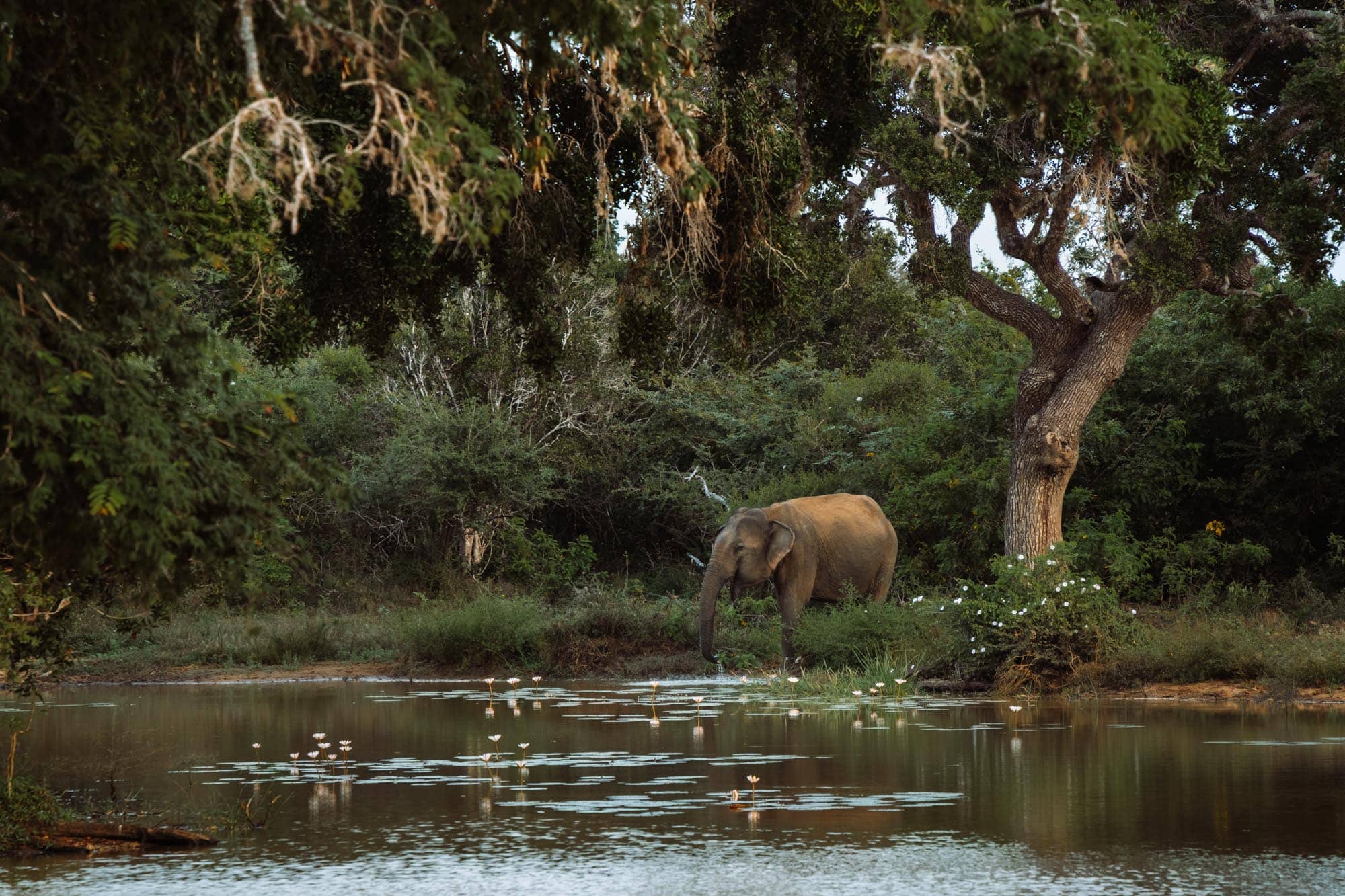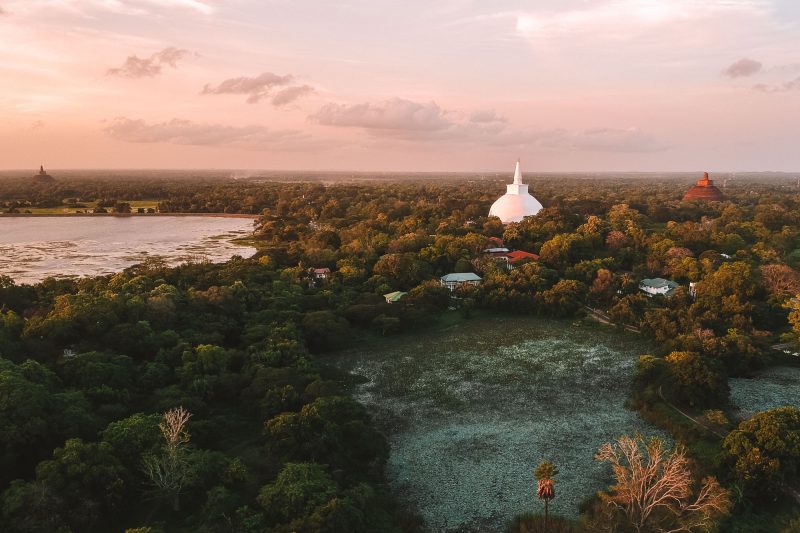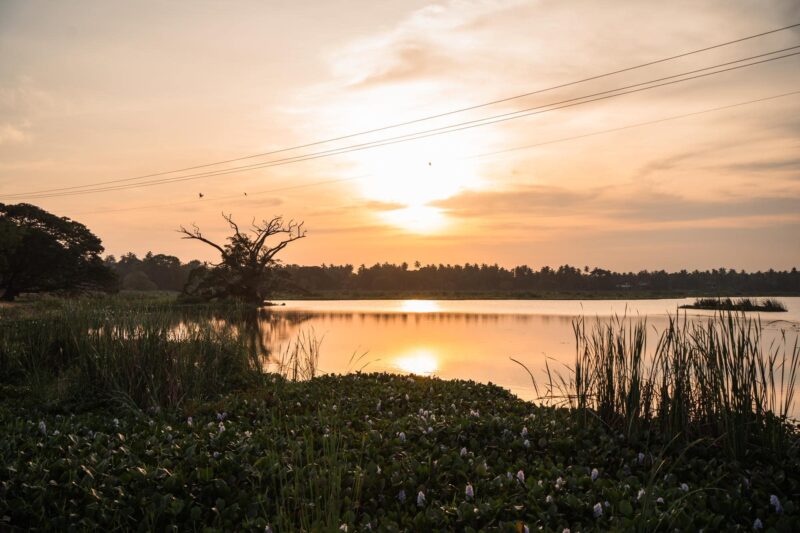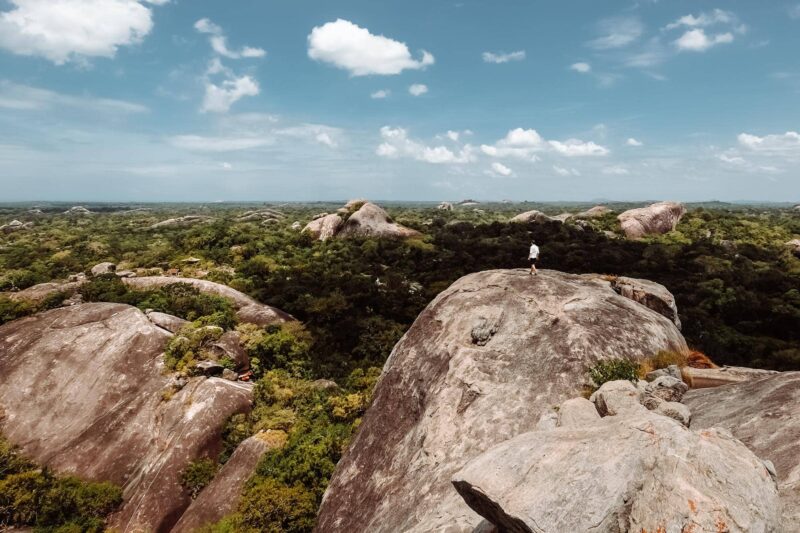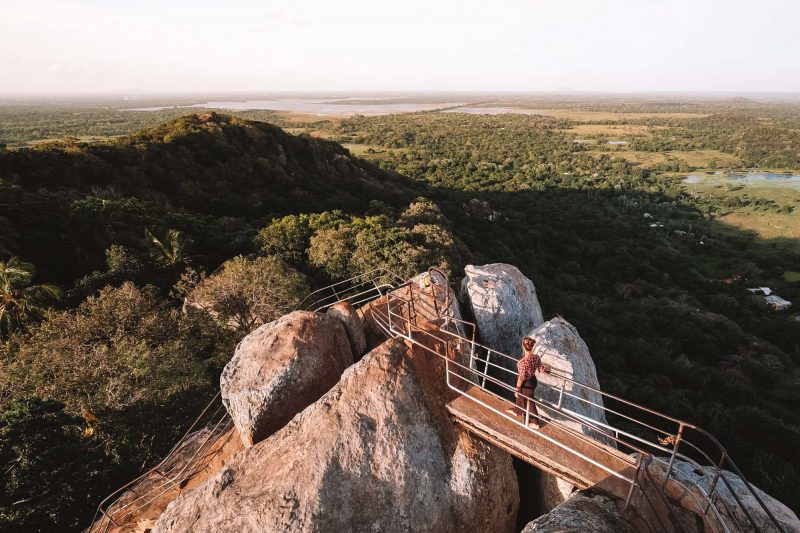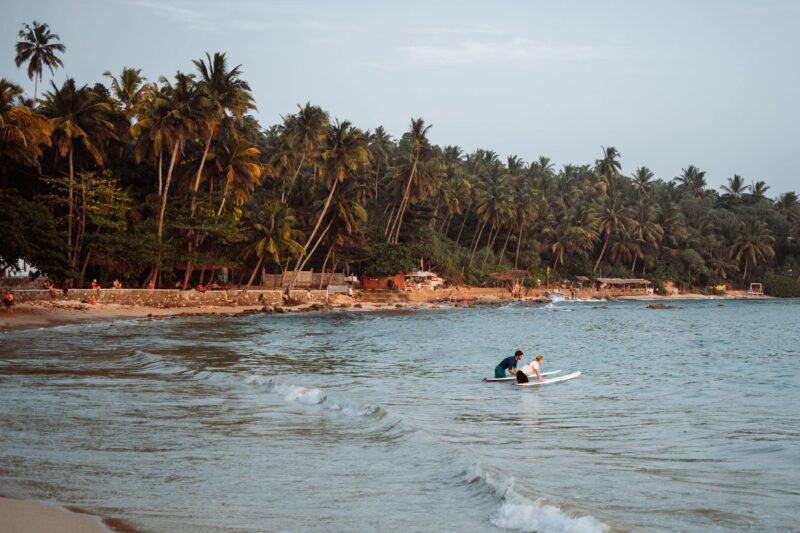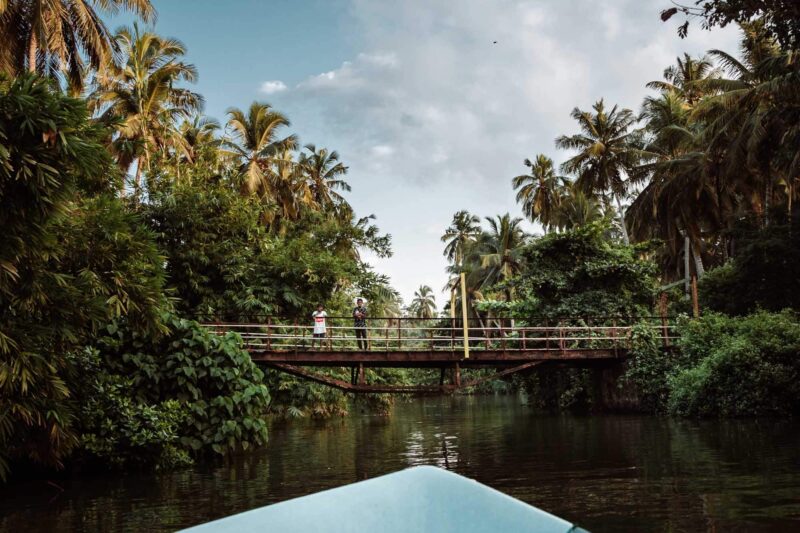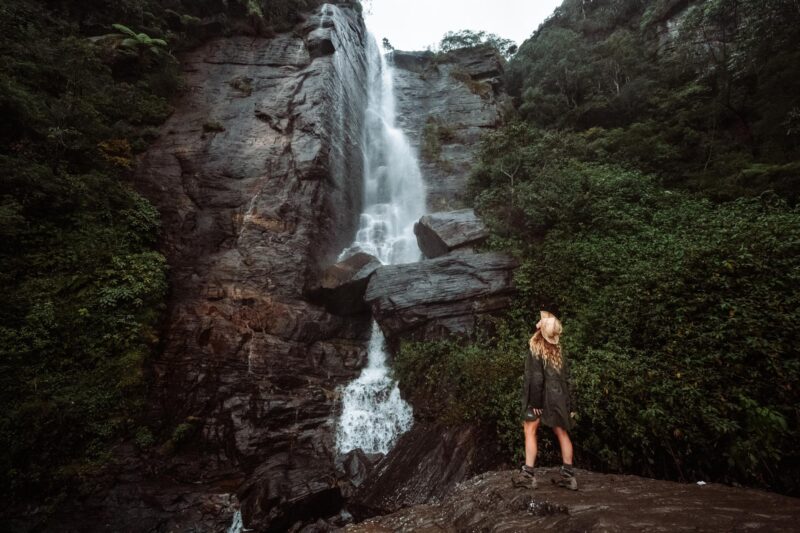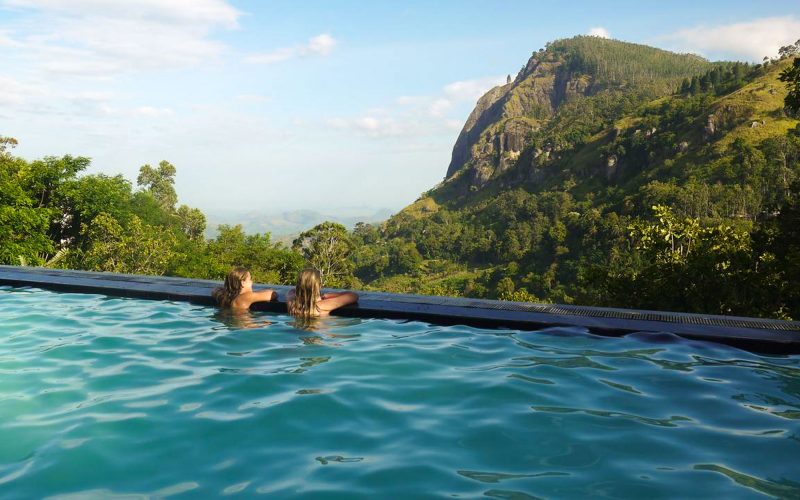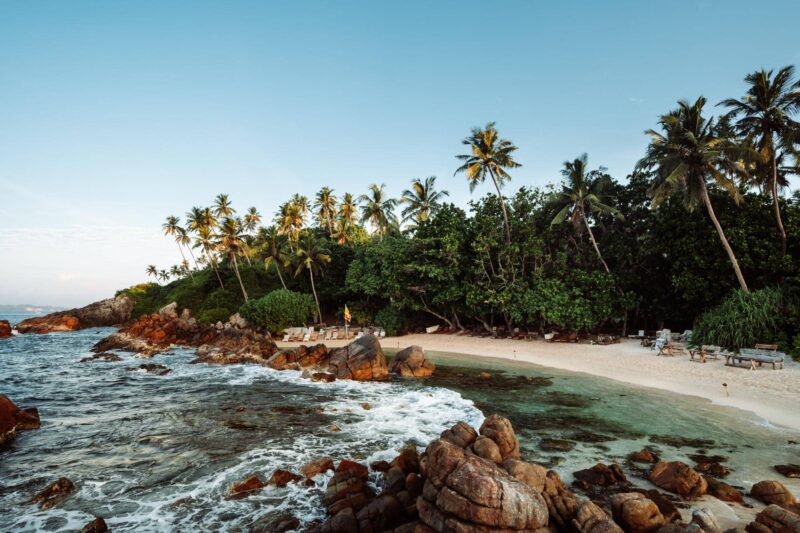Yala National Park is the third-largest national park in Sri Lanka, but it ranks number one on the list of most visited parks in the country. The park is home to many large wild animals such as elephants, sloth bears, crocodiles, and water buffaloes. But the fact that Yala National Park is one of the best places in the world to spot a leopard in the wild makes it an exceptionally unique destination. Before jumping into an adventurous jeep, read this article first for plenty of handy tips. This way, you’ll make the most out of your visit to Yala National Park!
What does Yala National Park look like?
The scenery in Yala National Park is incredibly diverse. It consists of forests, shrublands, vast grasslands, and numerous lakes. One moment, you feel like you’re in a jungle, only to drive through a savanna-like landscape the next. To top it off, there’s even a beach because the park borders the Indian Ocean.


What animals live in Yala National Park?
Yala National Park is home to over 40 species of mammals and more than 200 species of birds, with the most famous residents being the leopards. Yala National Park even boasts the largest concentration of leopards in the world! Additionally, you’ll find elephants, sloth bears, water buffaloes, jackals, deer, peacocks, crocodiles, and many other smaller animals.
Choosing between a full-day or half-day safari through Yala National Park?
When visiting Yala National Park, you can choose from the following safari options.
- Full-day safari (12 hours) from 06:00 to 18:00
- Morning safari (4 hours) from 06:00 to 10:00
- Afternoon safari (4 hours) from 14:00 to 18:00
If you want the best chance of spotting many animals, then a full-day safari is the right choice. A 12-hour safari may sound long, but it’s divided into two parts. Between 12:00 and 14:00 is lunchtime, and all jeeps drive to the lunch spot in the park. The park actually closes during this time, and no jeeps are allowed to drive through it. This allows you to stretch your legs and enjoy a leisurely meal. A full-day safari can be tiring, especially because the roads are full of potholes, but in our opinion, it’s the best choice to truly experience the park. If you don’t feel like spending a whole day in a jeep, then a half-day safari is also fine to get a good impression.
What’s a safari through Yala National Park like?
A safari through Yala National Park is different every day. After all, it’s not a zoo but a natural area with wild animals free to roam as they please. To give you an idea of what a full-day safari looks like, below is my experience. This way, you’ll have an approximate idea of what to expect.
The morning in Yala National Park
You’ll rise early when you’ve booked a full-day or morning safari. Well before sunrise, you’ll be picked up from your accommodation to queue up at the entrance. Don’t forget to bring a sweater because you’ll be riding in an open jeep, and it can be chilly in the morning. As a safari through Yala National Park is one of the highlights of Sri Lanka, you’ll find yourself queuing with many jeeps. Gates open at 06:00, and you’re allowed to enter the park. Lean back in your seat and enjoy the magical moment of sunrise.
In the park, the jeeps try to keep some distance from each other so that you occasionally drive alone. But especially at the beginning and when animals are spotted, you’ll be driving with many other jeeps. The advantage of all these jeeps is that they exchange information. Upon entering the park, we heard that a leopard had been spotted that morning in a certain spot, and less than half an hour later, we found her. What luck! She was lying in the distance under a tree, feasting on her prey. We needed a zoom lens or binoculars to see her a bit better, but this was already a special encounter early in the morning.
What’s special about Yala National Park is its location by the sea, allowing you to pass along the beach during your safari. You can take a moment to step out, stroll around, and stretch your legs.
Tip: Bring your binoculars to Yala National Park, as they make animal spotting much more impressive. With them, you can see every detail.
The Afternoon of the Safari through Yala National Park
The lunch break from 12:00 to 14:00 happens at a designated spot within the park. By then, all morning safari jeeps have left the park, and all remaining jeeps converge at this lunch spot. Here, a delightful rice & curry buffet is set up. Be mindful that monkeys may try to snatch your belongings or food. They’ve become quite accustomed to humans here, so they’ve grown bold and less easily scared away. Therefore, don’t leave any items in the jeep unattended.
Later in the afternoon, our guide spotted another leopard. This time, it was closer, partially hidden in the grass. We had a few peaceful minutes to admire the magnificent animal before other jeeps arrived. Consequently, the leopard retreated further into the bushes. Additionally, I saw birds, water buffaloes, deer, elephants, and crocodiles.
The Different Blocks and Entrances of Yala National Park
Yala National Park is divided into five blocks, three of which are open to the public. This ensures a large part of the park remains a quiet habitat for animals. Block 1 is the most popular to visit since it’s where most animals live, especially the leopards. Additionally, the landscape in Block 1 consists of a beautiful mix of forests, open plains, and water pools.
Blocks 4 and 5 are currently open to visitors as well, but they have fewer roads and denser vegetation, making it a bit more challenging to spot animals. For these reasons, Block 1 is almost always the preferred choice.
Block 1 has two different entrances:
- Palatupana Entrance – This is the main entrance of Yala National Park, located close to the popular base Tissamaharama. Through this entrance, you enter Block 1 directly, where many animals reside. You can also drive further into the park through multiple roads from this entrance, which helps distribute the crowd. This makes it the most popular entrance for visitors, as it offers the highest chance of spotting leopards, bears, and elephants, among others.
- Katagamuwa Entrance – This entrance is located further north within Block 1 and is less frequently used. Through this entrance, you get a quieter safari experience, but it takes longer to reach an area with a higher chance of spotting animals.
The Best Time to Visit Yala National Park
The absolute best time to visit Yala National Park is between February and July. During these months, the water levels in the park are relatively low, prompting more animal sightings. July and August are also dry months, but they’re peak seasons, so it’s very crowded. In the other months, there’s a higher chance of rain, but you can still visit the park comfortably. February and March offer the greatest chance of spotting leopards.
Important: Yala National Park is closed for maintenance in September.
Where to Book a Safari through Yala National Park?
There are various providers where you can book a safari through Yala National Park, but not all are equally good. We recommend booking this safari as it offers the best value for money. An experienced guide will pick you up from your accommodation and drop you off after the safari. Additionally, they’ll try to be among the first jeeps to enter the park, increasing your chances of spotting leopards or other unique animals. During the introduction, the guide will ask you about the animals you hope to see and will search for them with their extensive knowledge. Along the way, the guide will tell you all about the flora and fauna of Yala National Park. It’s advisable to book in advance, and you can always cancel your reservation free of charge up to 24 hours before.

Tissamaharama: Your Base for Yala National Park
Tissamaharama serves as the perfect base for exploring Yala National Park. This village, also known as Tissa, boasts several excellent restaurants, comfortable accommodations, and a few interesting attractions. Moreover, it’s conveniently close to the entrance of Yala National Park, which is great when you have to rise early for a safari. Check out all the tips for Tissamaharama.
Our Favorite Stays near Yala National Park (Tissamaharama)
Tissamaharama offers a selection of beautiful accommodations. Let’s start with Rice Rice Villas. Here, you can stay in an idyllic hut amidst the rice fields, surrounded by palm trees. There’s an infinity pool offering a brilliant view of the vast rice paddies. The cozy Hotel River Front is another pleasant option. You can enjoy a pool in a beautiful garden, delightful breakfasts, and a warm rain shower. Plus, it’s beautifully situated by the river. If you have a slightly bigger budget, consider Richards Cabanas. This hotel is run by a lovely family, and you can relish delicious breakfasts and dinners here. Once again, there’s a lovely pool with luxurious loungers. Thanks to the lush surroundings, you can spot many tropical birds.
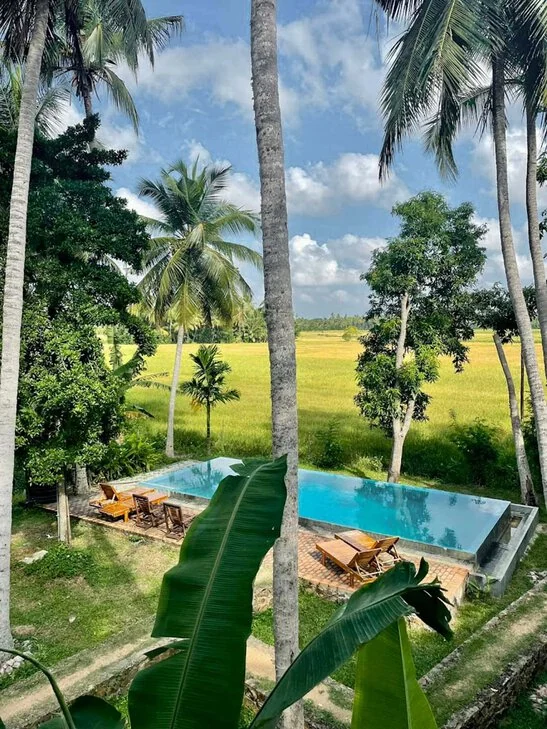 Rice Rice Villas Rice Rice Villas |
 Hotel River Front Hotel River Front |
 Richards Cabanas Richards Cabanas |
